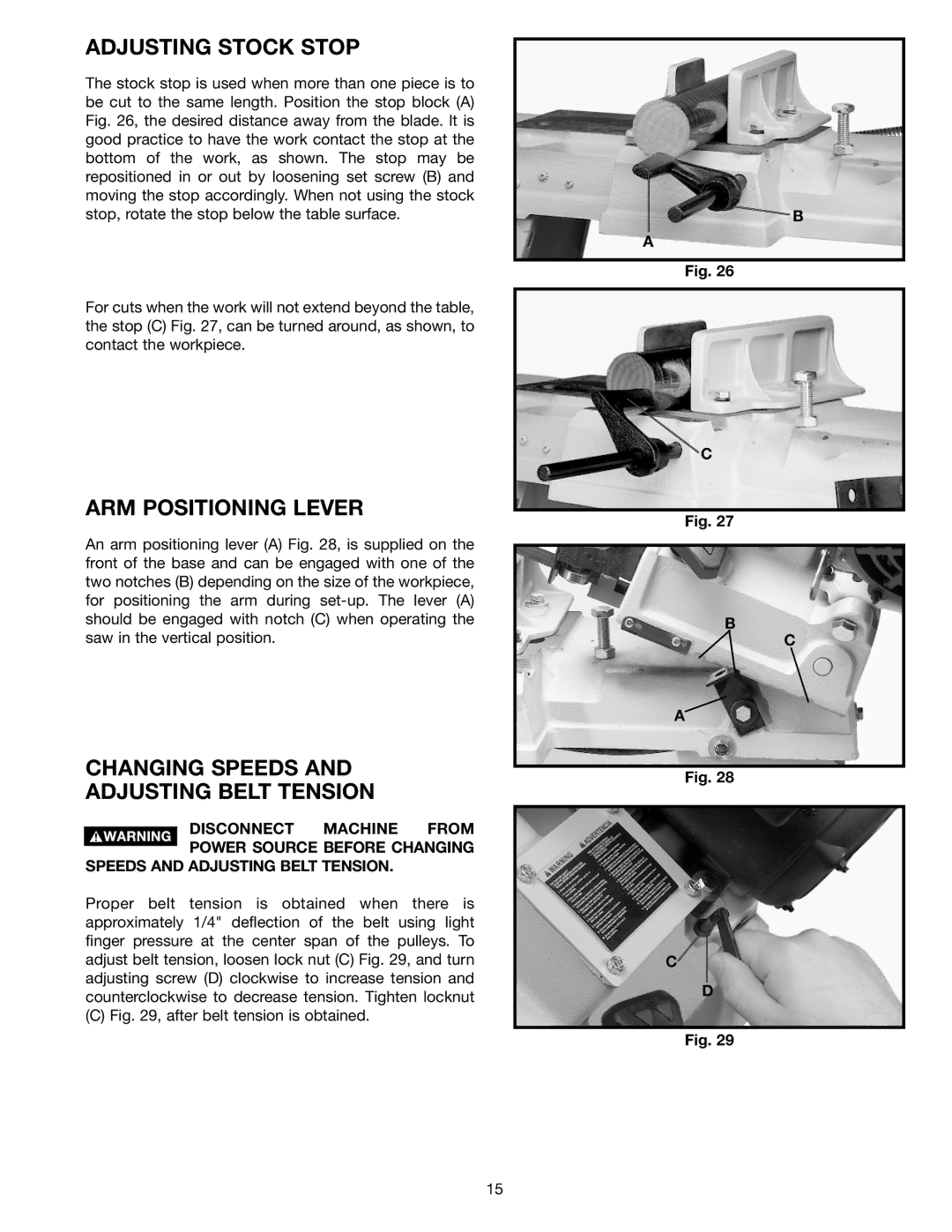
ADJUSTING STOCK STOP
The stock stop is used when more than one piece is to be cut to the same length. Position the stop block (A) Fig. 26, the desired distance away from the blade. lt is good practice to have the work contact the stop at the bottom of the work, as shown. The stop may be repositioned in or out by loosening set screw (B) and moving the stop accordingly. When not using the stock stop, rotate the stop below the table surface.
For cuts when the work will not extend beyond the table, the stop (C) Fig. 27, can be turned around, as shown, to contact the workpiece.
ARM POSITIONING LEVER
An arm positioning lever (A) Fig. 28, is supplied on the front of the base and can be engaged with one of the two notches (B) depending on the size of the workpiece, for positioning the arm during
CHANGING SPEEDS AND
ADJUSTING BELT TENSION
DISCONNECT MACHINE FROM
POWER SOURCE BEFORE CHANGING SPEEDS AND ADJUSTING BELT TENSION.
Proper belt tension is obtained when there is approximately 1/4" deflection of the belt using light finger pressure at the center span of the pulleys. To adjust belt tension, loosen lock nut (C) Fig. 29, and turn adjusting screw (D) clockwise to increase tension and counterclockwise to decrease tension. Tighten locknut
(C) Fig. 29, after belt tension is obtained.
B
A
Fig. 26
C
Fig. 27
B
C
A
Fig. 28
C![]()
D
Fig. 29
15
